What can you microwave safely? And the surprising things you can't
Save yourself from that embarrassing 'can you microwave' convo with mom, with this comprehensive list that takes microwave safety seriously...

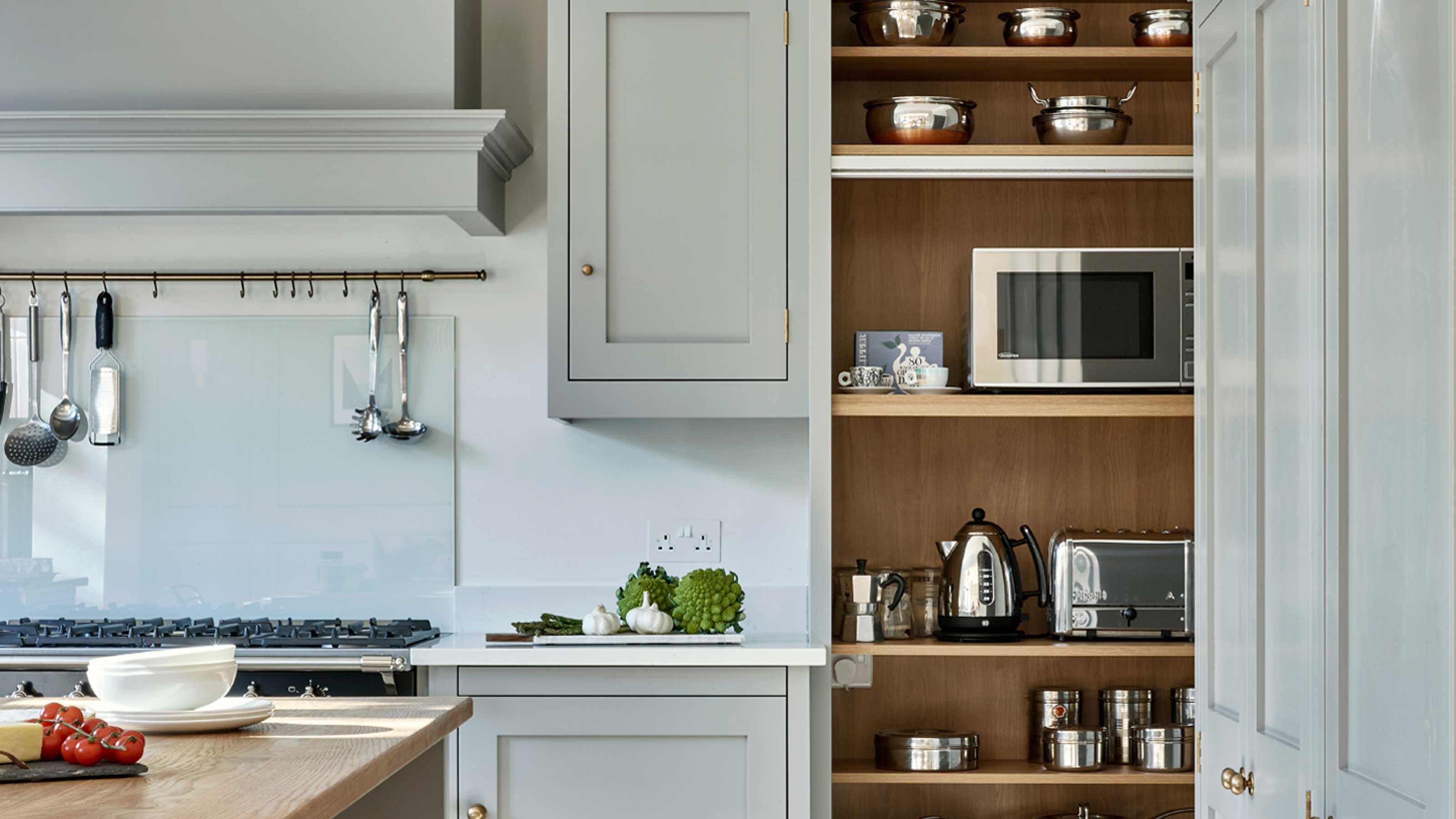
If your phone is full of 'can you microwave [insert food here]', searches on Google – we can clear up your culinary confusion, and save you from scrolling through the endless (and potentially dangerous) web of debate on the internet.
While your best microwave is perfect for quick meals and convenience when time is of the essence, there are some foods that are best prepared elsewhere or should be heated in containers specifically designed for this appliance.
Failing to follow your microwave manufacturer's instructions can involve making a mess, or invalidating your warranty. Worst still, you could cause an electrical or fire-related accident which can result in injury and damage to your kitchen or house. And, to add insult to injury, your home insurance might not even cover you if the incident is classed as negligent.
So, to keep you out of harm's way, we've produced a list of items (edible and non-edible) that you shouldn't nuke, plus a few things that can be used in this handy kitchen appliance.
Some foods, for example, aren't porous (which means air can't escape). Because of this, the build-up of pressure will cause the item to explode and for your evening to be spent cleaning your microwave... Not exactly our idea of fun, even if we've just splashed out on some fancy-smelling cleaning products.
1. Can you microwave styrofoam and other plastic containers?
Let's set the scene: You've had a boozy Friday night, ordered some takeaway to soak up the sauce, and have some leftovers stowed away in the fridge for a quick and easy Saturday lunch – genius.
But if you can't be bothered to pop your fare on a proper bit of dinnerware, you could be ingesting toxic chemicals (and that's on top of last night's alcohol). Here, one expert warns against putting plastic in the microwave...
'You should never microwave Styrofoam, plastic wrap, or takeout containers. These can release harmful chemicals into your food.' says Steven Hill, home improvement expert, and founder of DIY gazette.
'Styrofoam can leach chemicals into your food. Plastic wrap can melt and release harmful chemicals into your food. Takeout containers are often coated with chemicals that can be released into your food when microwaved.'
And, Nick Small, microwave expert at AO.com says: 'It might seem tempting to whack your takeaway from the night before into the microwave still in its styrofoam container, but this could be potentially risky. Styrofoam is a type of plastic that can easily melt when it becomes too hot which can transfer harmful chemicals onto your food. Put your food onto a microwaveable plate instead, your stomach will thank you for it!'
As an alternative, 'Glass, ceramic, and paper are all safe to microwave. Glass and ceramic won't absorb microwaves and paper towels can actually help deflect them away from your food. Just make sure that any containers you're microwaving are microwave-safe. You can usually tell by looking for a symbol on the bottom of the container that looks like a microwave with waves coming out of it.' continues Hill.
Get small space home decor ideas, celeb inspiration, DIY tips and more, straight to your inbox!
2. Metal containers or tin foil
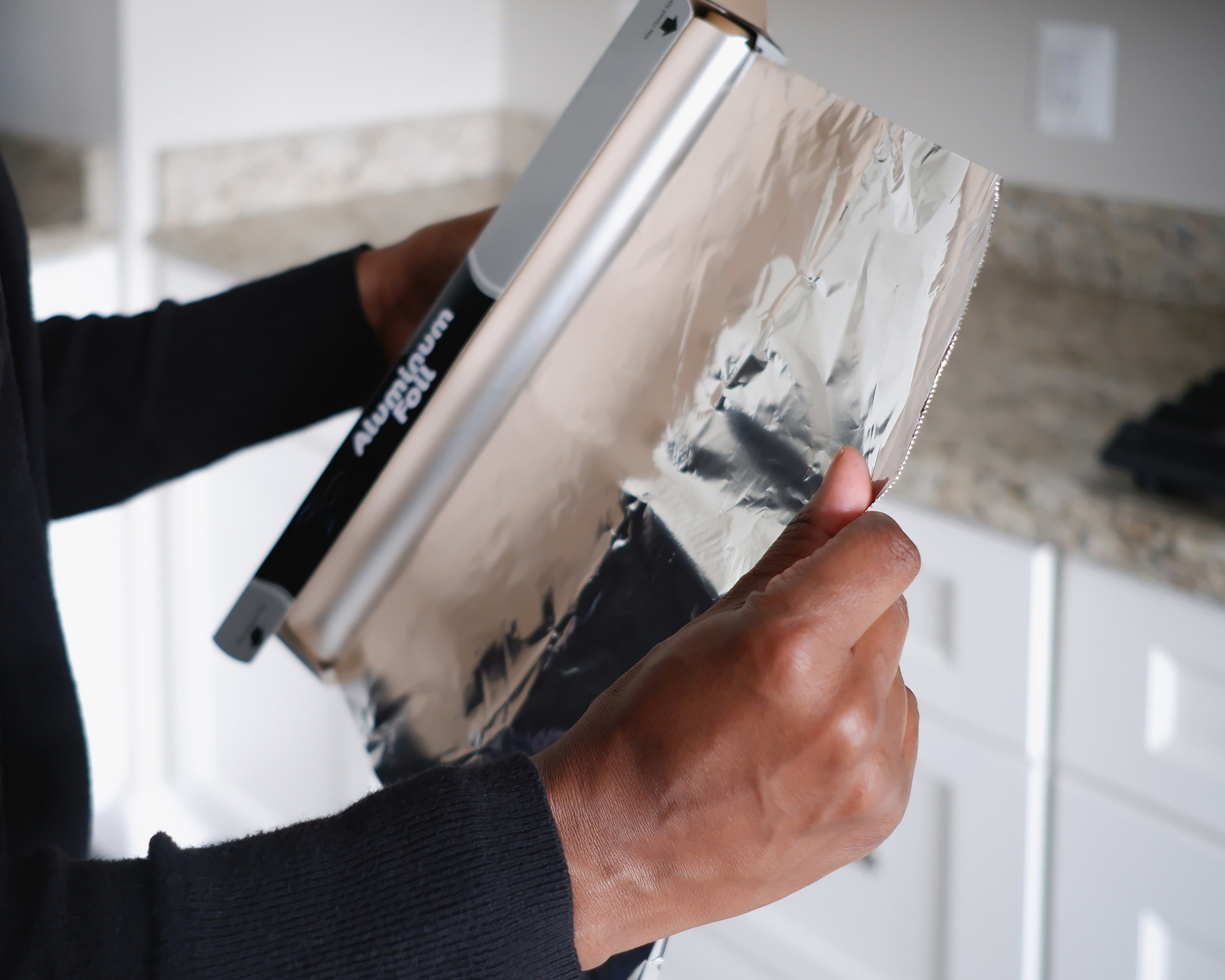
We're sure you've been told (or even learned the hard way about this one already). But if you're wondering if you can put tinfoil in the microwave – it's a hard no. Ditto for anything made of metal.
'Metal objects can cause sparks and even fires.' warns Oberon Copeland, owner, and CEO Of Veryinformed.com.
'If you must heat something in a metal container, be sure to remove the object from the container before microwaving it. Another no-no is aluminum foil. Like metal, aluminum foil can also cause sparks. However, it can also cause damage to your microwave. If you must use foil, keep it away from the sides of the oven.'
Small adds: 'Lots of plates/bowls/cups have patterns on which contain metallic materials. As pretty as they may look, these metallic materials will react with the micro waves and could cause a fire.'
3. Reheat rice with caution
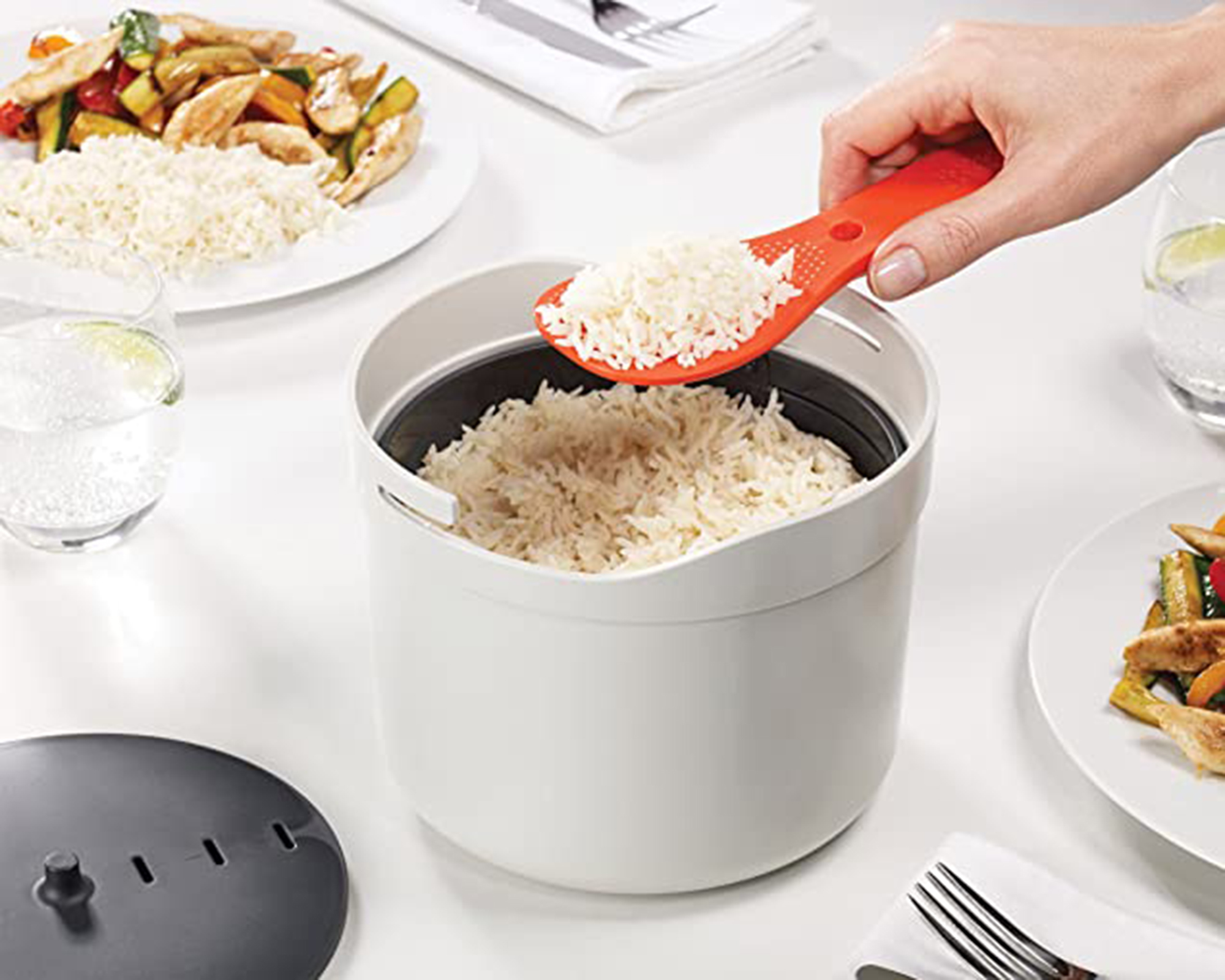
We don't know about you, but we're guilty of overordering when it comes to Asian takeout. Whether yours comes with fried rice, or you prefer a pilau with your curry, rice is one of those funny items that you should consider carefully before microwaving.
It's pretty safe to warm up grains you've cooked at home, but when you've had it delivered from an external eatery, you don't have control over how long it's been out and if it's been stored correctly.
'Reheating rice in the microwave is often noted with caution as some bacteria can form and cause food poisoning if not sufficiently heated. To reheat rice correctly, ensure you cook at a high temperature and that the rice is piping hot all the way through,' says Joe Authbert, buying manager at ProCook.
'If you’re a keen rice eater and reliant on a microwave, rice can be cooked from scratch in a microwaveable rice cooker. The rice cooker provides perfect fluffy rice every time and comes with a water measuring cup and vented lid for a foolproof meal.'
We also like this Joseph Joseph dishwasher-safe microwaveable rice cooker that comes with a contrasting red paddle spoon for fluffing and serving cooked rice.
4. Hard-boiled eggs
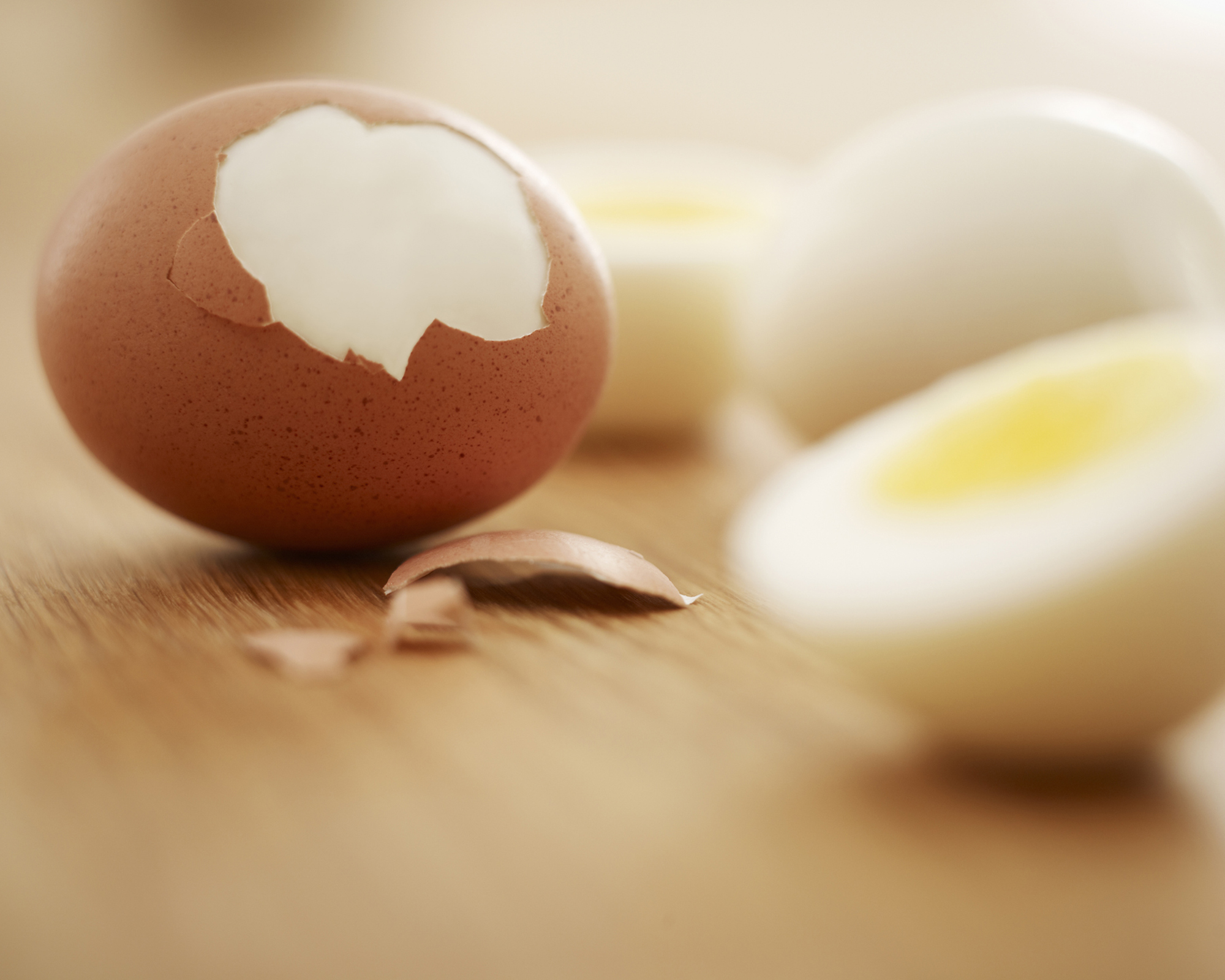
Packed full of protein and great for hair, skin, and nails, eggs are nature's wonder food. And while they're a bit of an office faux pas, making some boiled eggs are the perfect portable snack... if you prepare them properly.
'Cooking a hard-boiled egg, shelled or unshelled, in the microwave isn’t advisable as pressure and steam can build up inside the egg, leading to a very messy explosion,' warns Authbert.
'Instead, opt for a specially designed microwave egg poacher and cook until you reach your preferred consistency. A Microwave egg poacher is a great way to get microwaved eggs ready in minutes – just crack an egg into the poacher which as has been oiled and cook! Just be sure to pierce the egg with a knife or fork before cooking to release any excess pressure.'
And Aysegul Sanford, content creator, and owner of Foolproof Living blog agrees. She says: 'Though tempting to accelerate the cooking time and save on mess, putting a whole egg in the microwave is definitely not a good idea. The increasing heat will cause pressure to build up inside the shell causing it to eventually burst with a fair amount of force. Stick to the stovetop for your next soft boil and thank us later.'
Boiling a hardboiled egg using your best saucepan on the hob is super easy. Simply submerge your raw eggs into a pan of cold water, bring to the boil, then simmer for around 7 minutes (depending on the size of the egg).
If you're still unsure or don't have a timer to hand you can take the fuss out of cooking by buying a color-changing egg timer. Kids will love this NobleEgg Egg Timer, but should always be supervised near hot water and kitchen equipment.
Alternatively, you can achieve the same result using an air fryer. Our small kitchen appliances editor, Millie Fender does a cracking job of cooking air fryer hard-boiled eggs, and this hack requires no water!
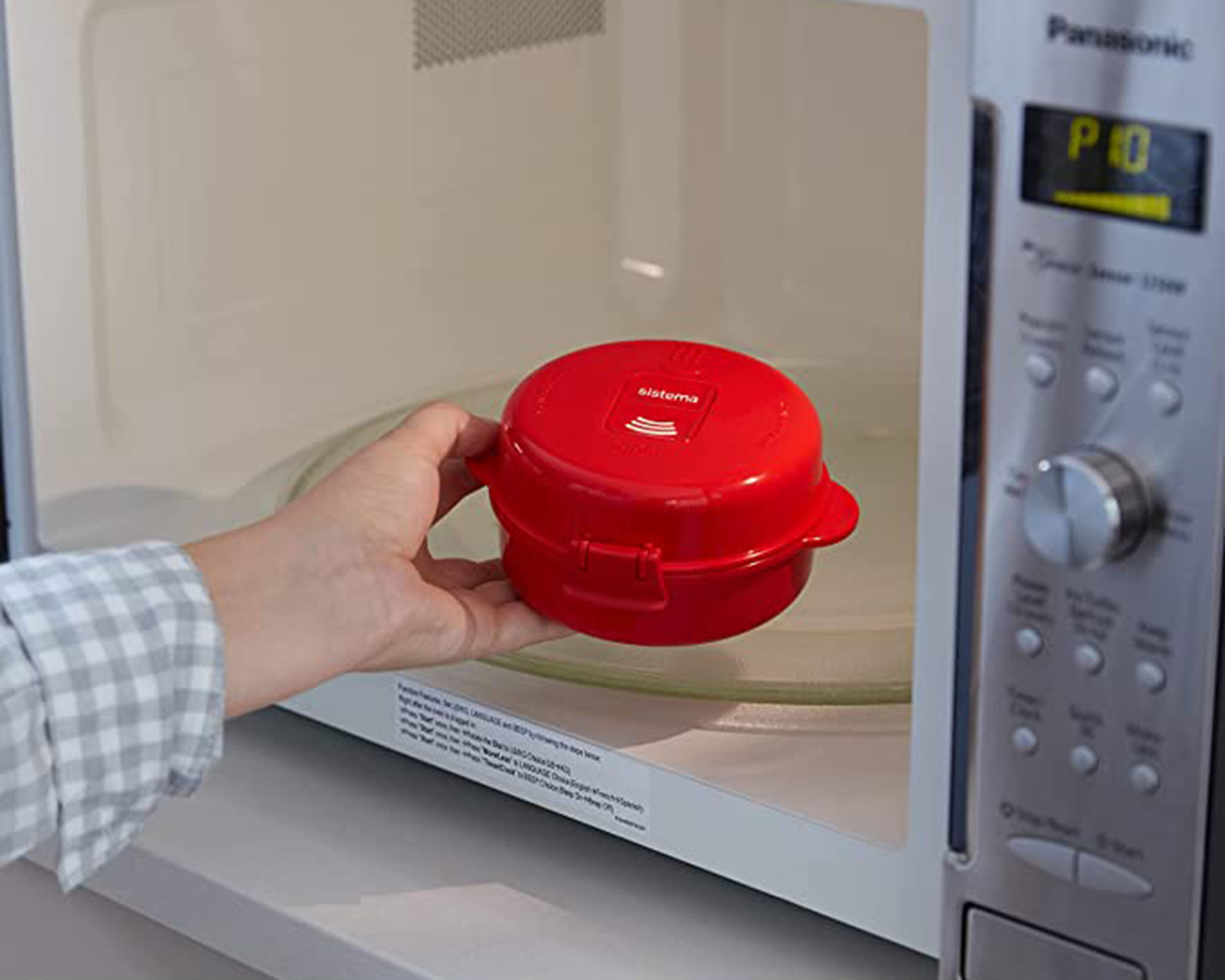
This Sistema microwave egg cooker and poacher with steam release vent (available from Amazon) is great for poached and scrambled eggs, and can even make mini omelets too.
5. Tomato-based sauces
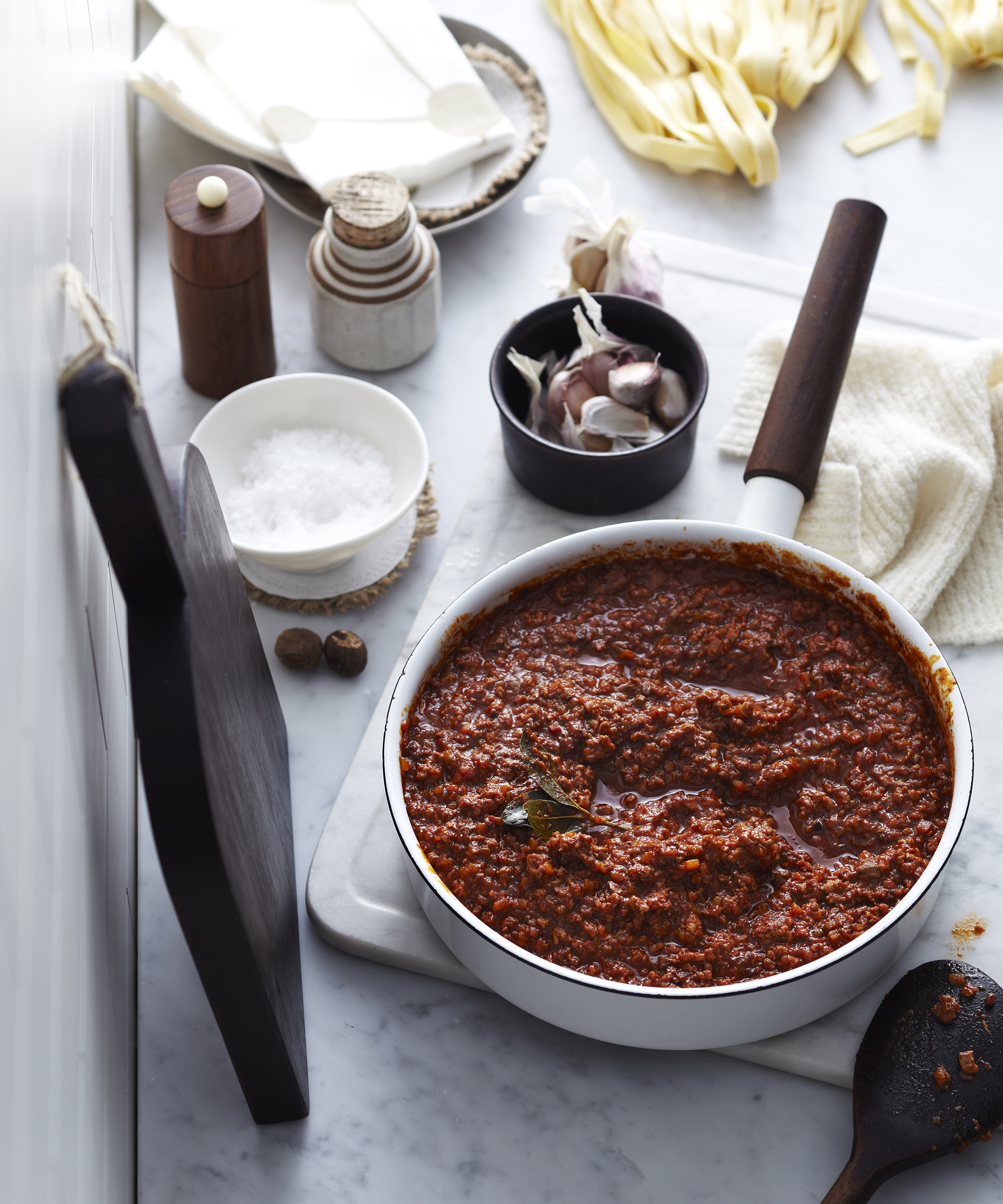
What do rich ragu and a chunky chili con carne have in common? Yup - they're made with a delicious, tomato-based sauce that taste even better the day after (if we say so ourselves). But, you'll need to be mindful when reheating these mince-based dishes, and anything else containing this savory fruit as a base.
'Microwaving tomatoes and tomato sauces may cause them to burst and spill their contents everywhere. The microwave will be filthy. The exact tomato sauces will likewise be thrown out,' says Dan Close, founder, and CEO at We Buy Houses in Kentucky
According to the USDA, reheating leftovers in a slow cooker is not recommended either. So to warm your saucy leftovers safely, use your hob to gently simmer until piping hot, or decant into an ovenproof casserole dish and heat in your oven until 165°F/75°C. You can use a food thermometer to double-check if you're unsure.
If we haven't managed to save you from scarlet stains in time – don't panic. By using vinegar to clean, you can have a sparkling microwave in no time, using this 10-minute TikTok cleaning hack.
6. Don't microwave sausages

Sausage links are so versatile and super handy to have in the fridge. They're a staple of a traditional fried/grilled breakfast, are great for quick picky snacks in the fridge, and coupled with mashed potato, make a filling and relatively-healthy dinner option if eaten as part of a balanced diet.
But if you're thinking of pre-cooking sausages, and zapping them as you need in the microwave, consider alternate ways to reheat them, according to this medical professional.
'Sausages contain chemical compounds called cholesterol oxidation products (COPs) which are created during the processing of animal meat. These compounds are harmful to human health, and their consumption is associated with cardiovascular disease.' says DJ Mazzoni, MS, RD, CDN, CSCS, and medical reviewer, Illuminate Labs.
'When microwaving sausages (or other processed meats), the levels of COPs increase. I would recommend reheating sausages using other methods such as baking, though I don't recommend processed meat consumption generally.'
7. Chilli peppers

If you like to spice things up in the kitchen, you might be partial to adding a little bit of chili to your favorite food – especially if you enjoy a little container planting, or have your own kitchen garden. But if you're wanting to venture out from the odd splash of Tabasco, sweet chili, or sriracha on the side of your plate, popping a fresh hot chili pepper in the microwave is not advised. In fact, you could end up in tears, as one expert explains.
'Never microwave hot peppers. These peppers already pack a flaming punch, but when you microwave them you will actually be met with a smoking vegetable, as well as possibly setting them alight!' says Michael East, CEO of Griddle King, an online platform dedicated to outdoor living and grills.
'Hot peppers contain capsaicin – making the peppers spicy – and this chemical is released when they are microwaved. So, when you open that microwave door, you are going to be met with this chemical and your eyes will immediately start to water.'
8. Water
OK, Americans – we're looking at you, especially! When it comes to making tea, you should never heat the water in the microwave. 1) It's dangerous and 2) It's just not the done thing when it comes to preparing a British-style cuppa.
If you do need access to hot water quickly, invest in a boiling water tap, stovetop tea kettle, or heat your H2O in a small saucepan. When you put water to heat in a microwave, it doesn't always appear to 'boil' but you are essential superheating it which can scald and cause a nasty burn. Save yourself the trouble and flick the switch on your kettle instead.
9. Brewed coffee
If you're a parent (or a teacher), you'll know how quickly that cup of java can turn cold. So in an attempt to save on coffee beans or granules, quickly pinging it in your microwave, you might attempt to pop it in the microwave. But, if you're after great-tasting coffee, you're better off starting again.
'You should never microwave brewed coffee. As the coffee cools down, it becomes more acidic and bitter. Reheating coffee in the microwave changes coffee's chemical makeup and ruins the taste by breaking down any remaining aromatics,' says Megan Weimer, content creator, food photographer, and recipe developer.
Making coffee without a coffee maker (using your kettle and instant granules) takes a matter of seconds and the best coffee machines can make even the most complex drinks in a few minutes.
10. Frozen meat
OK – this one gives us slightly scary flashbacks of mom asking us to defrost the chicken (and us forgetting). If you're making dinner for yourself or a loved one, remember that meat should be thawed in the fridge overnight. Yep, not on the counter, not in the sink, and certainly not in the microwave.
We understand that it can be confusing... Especially when microwave ovens have a defrost function (sometimes with a little steak or meat sign on the button). But, be warned that if you treat meat this way, you may be setting yourself up for a dodgy stomach, and several trips to the bathroom (gross).
Defrosting meat in the microwave can create hot spots (where bacteria can harbor) and cold spots where the fibers are still rock-solid. The inconsistency in temperature means that when it comes to cooking your meat, germs will have had ample time (and an optimal environment) to breed, which in turn, can give you food poisoning.
Surprising things you can microwave
1. Serve up sweet potatoes
Ahh, sweet potatoes: our favorite tuber after the plain ol' tato. Don't get us wrong, regular spuds are great, but when you want to switch things up, the orange variety is a refreshing change from you usual white carb.
If you've ever googled: 'how long to microwave a potato', you'll be pleased to know that sweet potatoes undergo a similar treatment in your micro-cooker.
'This root vegetable is among the hardest, which ultimately means longer cook time, however, the microwave can be a great way to cook them.' explains Trista Best, environmental health specialist, adjunct nutrition professor, and registered dietitian at Balance One Supplements.
'The minimum requirement to cook a sweet potato in the microwave is to simply poke several holes in it with a fork or knife to allow venting and thorough cooking. If the potato is going to be served whole it is ideal to wash it prior to stabbing and placing it in the microwave.'
'For enhanced flavor, you can rub it with your favorite cooking oil then salt and pepper the outside of the potato. Most of the valuable nutrients, especially fiber, are in the skin and right below the surface making it best to consume at least a portion of the skin.'
'One medium, approximately 8-ounce, sweet potato only needs about five minutes in the microwave to be thoroughly cooked. For larger potatoes, continue cooking at one-minute intervals until it is done.'
'The first pass through the microwave for sweet potatoes, and most other vegetables, does not significantly reduce the nutrients. However, reheating leftover vegetables in the microwave can cause up to a 30 per cent decrease in nutrients.'
2. Cook crispy bacon
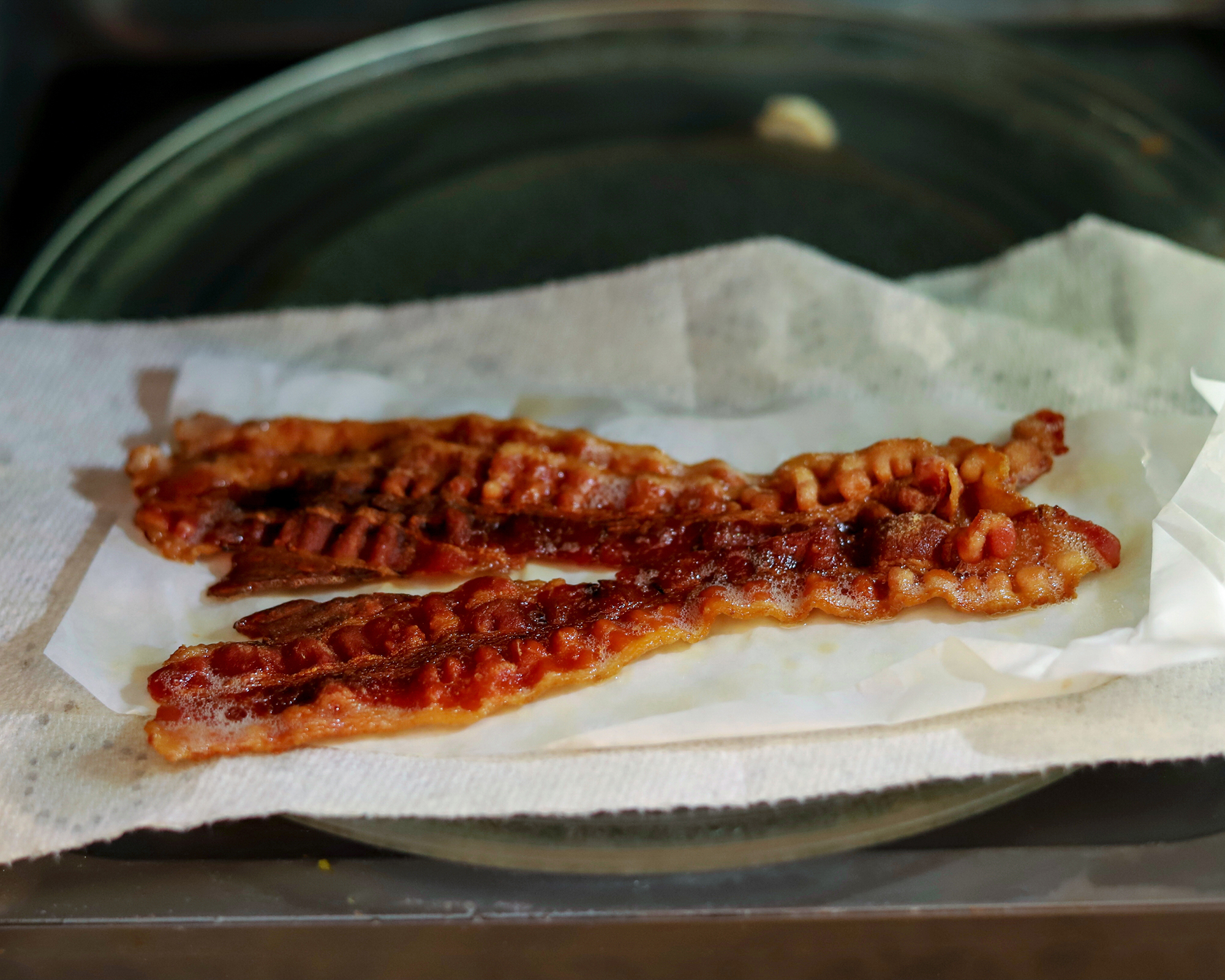
If you've got dirty pans in the dishwasher or soaking in the kitchen sink – it's still possible to enjoy the taste of crisp bacon, alongside your aforementioned microwaved eggs.
'As a BBQ aficionado - amazing burgers are kind of my specialty. But one thing that is a little fiddley - and to be honest - slightly annoying to do on the BBQ, is bacon. And yet any great burger should include amazon crispy bacon,' says Bobby Pritchard, owner, and grillmaster, Smokey Grill BBQ.
'But to save lots of time and effort you might be surprised to know you can get perfectly crispy bacon done in the microwave.'
'The first thing you need to do is find a large bowl that is slightly larger in diameter than the bacon rashers you will be using. Next, place the bacon slices in the bowl, making sure that they are evenly spaced. Then, take an upside-down bowl and place it on top of the bacon slices. Finally, microwave the bacon for about two minutes or until it is crispy.'
'You can absorb the fat with a paper towel- or if you're less worried about calories, keep the fat when you add the bacon to the burger. The fat renders and mixes with the burger juices - making the whole thing taste insanely good,'
'The only thing I would add is the concern with microwaving bacon is that the high temperatures may cause harmful chemicals to form. In particular, the nitrates in bacon may convert into nitrosamines, which are carcinogenic. While the evidence is not conclusive, it is advisable to err on the side of caution and not use this method too frequently.'
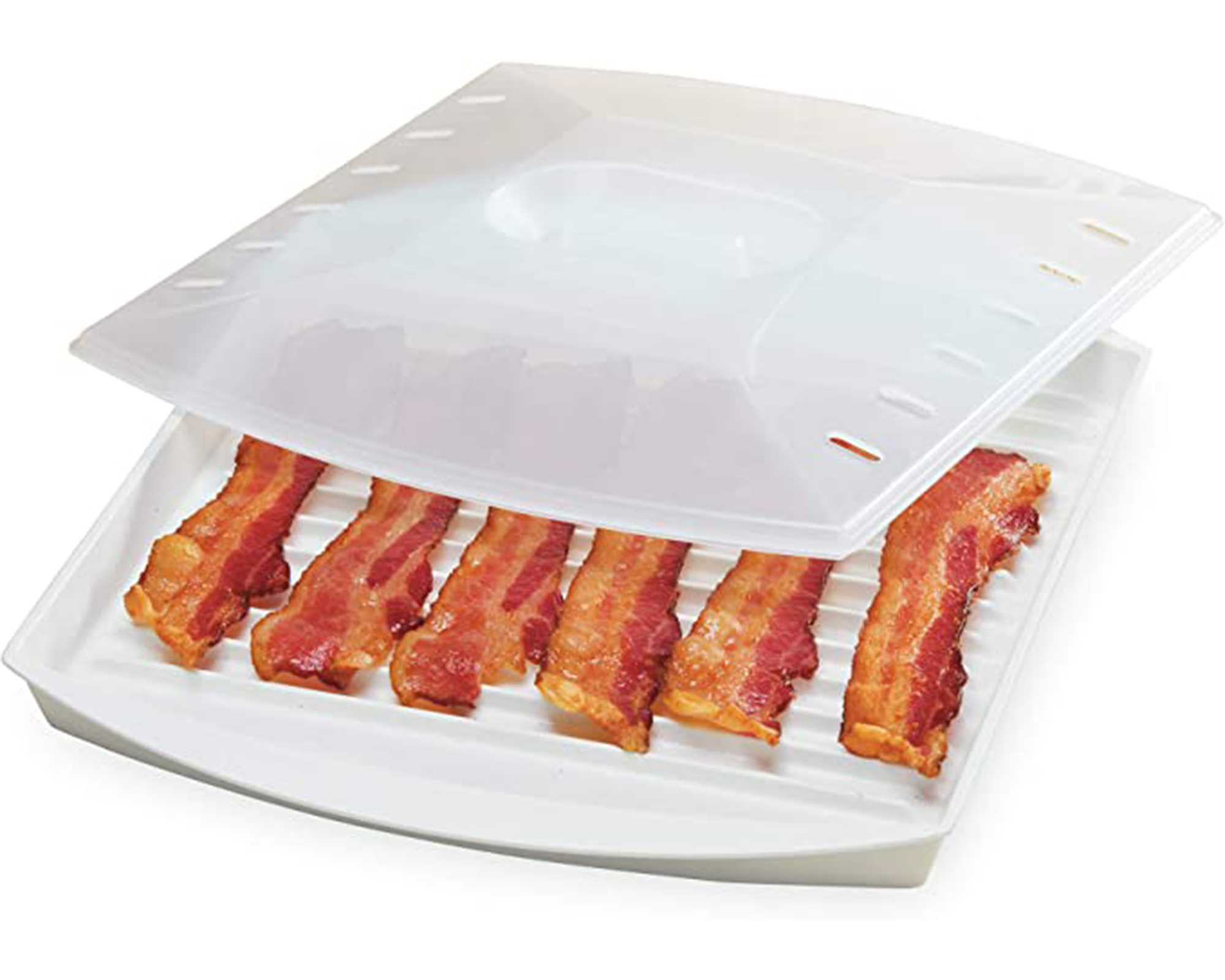
If you don't want to stack a set of bowls, this microwave-safe slanted bacon rack from Prep Solutions on Amazon cooks 4-6 strips of bacon. The slanted design means that any fat or excess water drips away so that the pork doesn't essentially sit or boil in its own juices.
3. 'Boil' dry pasta
Renters and house sharers listen up! If your kitchen setup doesn't come with a hob, or your roomie is busy cooking up a storm – you needn't go hungry. Make one of Italy's infamous foodstuffs in your microwave for a fast meal in minutes. We can't say it's the authentic route to preparing penne, fusilli, or spaghetti, but when you're tight on resources, this nifty pasta hack is genius.
'Pasta can be cooked in the microwave as long as it’s in a large container of salted water. You will use a ratio of two parts water to one part pasta. It will take between 6-11 minutes depending on the strength of your microwave. It is perfectly safe and a nice option when you do not want to heat up your kitchen with the stovetop.' says Emily Meyers, founder of Garlic Head.
Why not have a go at recreating her microwave cacio e pepe recipe for a 10-minute dinner? It's suitable for vegans, so everyone can enjoy!
4. Make a chocolate (mug) cake
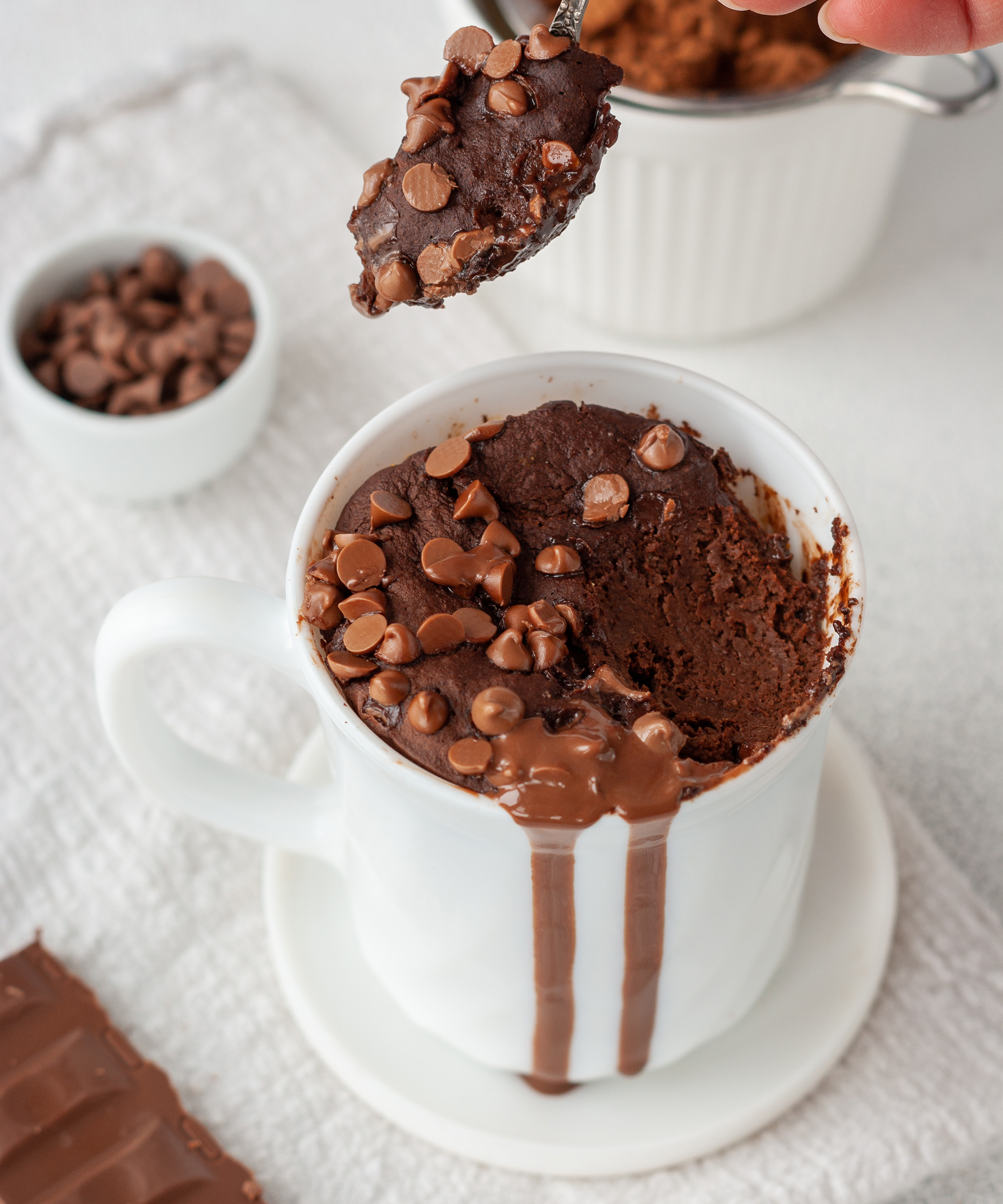
OK, so don't expect a masterpiece that could win The Great American Baking Show (or GBBO if you're across the pond). But if you get a craving for something sweet while watching TV – it's totally possible to whip up a quick mug cake (no expensive stand mixer required, plus there's minimal washing-up to do!)
'This is one of the easiest ways to bake a cake if you hate cleaning up and going through tiring procedures.' says Noah Davis, author at Power Up Cook blog.
5. Rebatch wax and leftover soap bars
If you're trying to save dollars, but want your house to smell good – try making wax melts by repurposing the scraps from your best candles and popping them in the microwave. You'll then need to carefully decant the hot liquid into another container and allow it to cool.
'Waxes have no water, so they don't get hot but if you add a few tablespoons of water, it should work,' says Davis.
'For soap, cut it into smaller pieces and add a few tablespoons of water as well. In any case, make sure to keep an eye on the melting process and use ceramic, glass, or microwave-safe containers.'
6. Clean makeup sponges
We love creating new looks with cosmetics! From flawless foundation to contouring with bronzer, if you want to enhance what your mumma gave ya, it's easy to do with a couple of products. But it's all in the application too, so brushes are a must if you want to reimagine your favourite Instagrammer's looks on yourself.
The downside? Brushes, beauty blenders and sponges can take forever to clean. But if you want to speed up the process, Small has got a high-fashion hack to get the gunk off your tools:
- Soak your makeup sponge in warm, soapy water. Rinse it out and soak it again.
- Place the sponge in a microwaveable cup with a small drop of washing-up liquid and warm water and place it in the microwave for one minute.
- Leave it to cool for a little while, rinse the sponge under your cold kitchen tap, and pat dry. Voila! A clean makeup sponge.
7. Easy-peel garlic cloves
We love adding garlic to our food. Sure, it might give you bad breath, but it's totes worth it for butter-filled baguettes, Italian pasta sauces, and anything else we can add a bulb's worth to.
No need for stinky fingers struggling to break up the bulb with Small's helpful trick. He advises that you pop your full bulb of garlic in the microwave for 20 seconds and you’ll be able to simply pull the cloves apart.
Then use a garlic crusher or Microplane to break down your tasty allium.
8. Revive stale bread
Got a loaf that's gone a bit dry? Don't feed it to the birds!
Instead, Small says to 'wrap your stale bread in a damp paper towel and microwave it for 10 seconds or so. This should help to draw the moisture into the bread and revive it.'
What foods should not be microwaved?
If you're not directly breastfeeding, or making a fresh batch of formula, then you'll need to be careful about how you reheat expressed milk.
The National Health Service (NHS) says that: 'You can feed expressed milk straight from the fridge if your baby is happy to drink it cold.'
'Or you can warm the milk to body temperature by putting the bottle in a jug of warm water or holding it under running warm water. Do not use a microwave to heat up or defrost breast milk. This can cause hot spots, which can burn your baby's mouth.'

Hi, I'm the former acting head ecommerce editor at Real Homes. Prior to working for the Future plc family, I've worked on a number of consumer events including the Ideal Home Show, Grand Designs Live, and Good Homes Magazine. With a first class degree from Keele University, and a plethora of experience in digital marketing, editorial, and social media, I have an eye for what should be in your shopping basket and have gone through the internal customer advisor accreditation process.